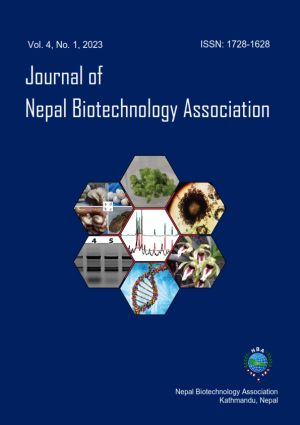Wild and Cultivated Mushrooms of Nepal as a Source of Nutrients and Nutraceuticals
DOI:
https://doi.org/10.3126/jnba.v4i1.53445Keywords:
Antioxidant, Flavonoid, Mushrooms, Nutrients, PhenolAbstract
This study was carried out on nutrient and nutraceutical analysis of wild and cultivated edible mushrooms collected from different parts of Nepal. A total number of five species of mushroom were collected including two wild (Morchella sp. and Ganoderma sp.) and three cultivated species (Pleurotus sp., Agaricus sp. and Lentinula sp). The moisture, protein, crude fat, total ash, dietary fibre and carbohydrates were determined as nutrients whereas phenolic content, flavonoid content, antioxidant and mineral matter were determined as nutraceuticals. In this study, the highest amount of nutrients contained was protein (34%), fat (7%), fibres (42%), ash (11%), and carbohydrate (60%). The nutraceutical in these mushrooms is phenolic (0.79 μg of GAE/gm), flavonoid (0.585 μg of QE/gm) and antioxidant (0.261±0.036 mg/ml). The concentration of iron (26.19 mg/l) was found highest in all mushrooms, whereas lead and chromium were found in negligible amounts i.e., >1. The comparative study revealed that the nutrients in cultivated mushrooms have highest than in wild mushrooms. Moreover, the nutraceutical is maximum in wild mushrooms (phenolic content of 0.79 μg of GAE/gm, flavonoid content of 0.58 μg of GAE/gm) than in cultivated mushrooms. Furthermore, wild edible mushrooms are a good source of antioxidants than cultivated ones. In conclusion, this study suggested that mushrooms are a good source of nutrients and nutraceuticals which are considered valuable good nutritional dietary supplements.




